

Diamond shape refers to the physical characteristics or overall look of a diamond. There are a variety of diamond shapes like round, princess, cushion, emerald, Asscher, radiant, oval, pear, and heart shape. Each cut has its pros and cons. Diamond cut is the first thing that a person consider while purchasing any diamond jewelry or ring.
Princess cut is the second most popular shape. Princess cut diamonds have beautiful spikes of square diamonds. They offer a modern look and flexibility to work in almost any style of ring and jewelry.
Cushion cut diamonds incorporate the attraction of a square but with soft, round edges, which lends itself to this romantic shape. This timeless structure is based on the discovery of an ancient mine, and it was redesigned centuries ago. Cushion cut diamonds are a great option for any set style
Emerald cut diamonds are precious for their beautiful beauty. The shallow tent and crown emphasize the clarity of the stone, while the reflective steps enhance the color and brilliance of the diamond.
The asscher cut has square shape with corners. A high crown with large cut features offers more ingenuity than another popular step-by-step cut, emerald shape. Asscher's diamond is smooth and modern in solitaire settings, and its unique texture perfectly complements the inspired vintage styles.
The shape of the pear puts on the rounded edge that touches the point at the opposite end. This unique design snaps your fingers and gives it a unique look. The combination of a marquise shape and the most popular glossy or round cut is intended to reflect the brilliance of the diamond, which makes it important to find a stone with a high proportion.
The Radiant Diamonds incorporates the shadow of the emerald cut diamond in the fire and shines like a round circular diamond. Due to its structure, this composition requires a lot of carat weight in depth to maximize gloss.
The ideal oval shape is always the same and shows the same fire and splendor in the oval diamonds. A radiant twist around the classic, compact make-up can create the illusion of large size. Oval diamonds have a variety of functions, are wonderfully beautiful, and unique.
A heart-shaped diamond is a symbol of true love. They sparkle with two equal halves, creating a bold and loving look. Heart-shaped diamonds are very popular in Claddagh designs, and offer a unique look to any engagement ring arrangement.
The diamond-shaped markings indicate the last pointed point in the center of the curved area to make the eye look. With a wider range of space than any other diamond shape, the shape of the marquise increases the visual size and gives a different look to any set style.
Until the middle of the twentieth century, there were no agreed standards for the sale of diamonds. GIA has created the first, and now world-class standard for diamond specification: Color, Clarity, Cutting and Carat Weight. Today, 4C quality diamonds are the perfect way to check the quality of any diamond, anywhere in the world. The construction of the 4C Diamonds meant two very important things: the quality of the diamonds could be conveyed in the universal language, and diamond customers could now know exactly what to buy.
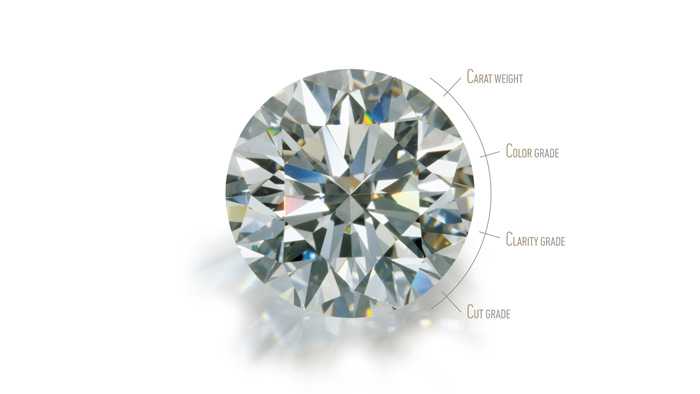
The ability to cut diamond determines how much it reflects and how it emits light. Basically, cut refers to the diamond shape. For example- pear cut, oval cut, princess cut and more.
Color affects the beauty and value of a diamond. GIA grades diamonds form D to Z. In the diamond color scale, D means colorless diamonds.
The Diamond's Clarity range tests how pure a diamond is. GIA has set clarity where flawless diamonds come under FL on the grading scale.
Carat refers to the weight of diamond. It is a very visible material when comparing diamonds.
Shop DiamondsWhile every diamond is exclusive, all diamonds share certain essential features. A diamond’s anatomy, or its basic structure, determines its magnitudes, brilliance, scattering and sparkling. Each part of the diamond has a definite name, and having a simple understanding of how each part contributes to the diamond as a whole will help you find your flawless diamond.

A diamond is consist of the eight main components. They are Width, Table, Crown, Table Spread, Girdle, Pavilion, Depth, and Culet. Below is a brief description of each part of a diamond and its location.
Before buying a diamond, make sure that you have a basic understanding of a diamond’s anatomy. This will permit you to truly appreciate diamonds and all their complexities, communicate with specialists about a particular diamond, and, most decisively, it will assist you in making a well-thought out decision about which diamond is best for you.
Shop DiamondsThe cut of a diamond does not refer to its shape, but to the balance, proportions and polish obtained by the diamond cutter. The degree to which a diamond is cut is directly related to the overall beauty of the diamond. When the diamond is well cut, the ability of the diamond to reflect and illuminate the light is greatly improved. By understanding the way light moves diamond crystals, modern diamond cutters have developed a certain set of sizes and angles that are known to brighten the diamond's inner light and reflect it with its beautiful light.

Ideal Cut diamond is a round, glossy, or princess cut diamond in scales and beautiful angles, and has excellent polishing and sculpting scales. Ideal Cut Diamond is perfectly balanced in bright light, producing that fire and splendor all the way to the table and crown. European Jewelry offers a good selection of Ideal Cut Diamonds.
GIA, considered one of the most respected natural diamond processing laboratories, uses the following language in their certificates to measure the range of round diamonds: Excellent, Very Good, Good, Fair, Poor. The best GIA cuts will be included in the Ideal or Super Ideal list on site. We use certain diamond features, such as cutting a distance, polishing, and balancing the distinction between Ideal and Super Ideal. If the cut distance is not available in the holding laboratory, such as carefully shaped diamonds, European jewelry incorporates the above features and depth, table, second measurements, and automatic features to test the fixed distance of the diamond.
Shop DiamondsThe color refers to the natural color of the diamond and not to the light of the bright colors when the diamond moves. Many diamonds naturally show small hints of yellow, brown, or gray. This color is due to the natural trace elements of nitrogen that were present when diamonds were formed under the Earth's crust. The smaller the color the diamond displays, the more likely it is to be present, so the value is higher.

The color of the diamond is the result of the formation of the diamond and does not change over time. Colorless diamonds allow light to pass through them compared to colored diamonds. These diamonds also emit more fire and sparkle. The process, from which diamond is made, is determined by its color. The whiteness of the diamond is the higher the value it will have. By measuring the color of the diamond, jewelers refer to the GIA color scale that starts with a D scale of colorless diamonds and grows up to Z as light yellow or brown traces are found on the diamond. Diamonds separated from D to F are among the most desirable and precious stones. These diamonds delight diamond lovers. However, if you have a low budget, you can also find beautiful diamonds with low marks. These diamonds are not exactly the color but do not reflect the color of the untrained eye.
Shop DiamondsClarity refers to the purity or clarity of a diamond in terms of the natural elements that were trapped inside or in the diamond during construction. Internal features are known as inclusions, and markings on the surface of the gem are known as features. The inclusion of crystals can be crystals on the outer surface or imperfections of the structure such as small cracks, known as feathers, which may appear white or cloudy.

The clarity of a diamond means finding the features of a diamond, including the colors and inserts. If you look at the pressure that diamonds are made, and that they are not produced in a lab without interest, you would not be surprised to find that most of these diamonds are flawless. There are usually two types of defects found in diamonds - blemishes and inserts. Installation occurs naturally with internal defects found in diamonds including cracks, air bubbles, and minerals. However, many stains occur during the cutting process.
Diamonds with smaller features and inserts are considered more important compared to those with more. GIA certificates contain the location of the diamond insertion, because there are no similarities between the two diamonds. The design of the GIA certificate confirms the value of the diamond you plan to purchase. It allows you to be sure that the diamond you receive is the one you paid for. Once you are ready as to which level of clarity you should choose, flawless is the best and most unusual clarity. Move the slider to view examples of different diamond clarity marks. Click the marker for more details.
Shop DiamondsCarat (ct.) refers to a separate unit of weight used only to measure gems and diamonds. Carat weight is often confused with visual size even though it is actually a measure of weight. Depending on the shape and type of gemstone being measured, the weight will reflect itself differently. For example, 1.00 ct. round diamond will measure approximately 6.5mm, and 1.00 ct. round sapphire will measure about 6.0mm. This is due to the wide variety of different gemstones.

The clarity of a diamond means finding the features of a diamond, including the colors and inserts. If you look at the pressure that diamonds are made, and that they are not produced in a lab without interest, you would not be surprised to find that most of these diamonds are flawless. There are usually two types of defects found in diamonds - blemishes and inserts. Installation occurs naturally with internal defects found in diamonds including cracks, air bubbles, and minerals. However, many stains occur during the cutting process.
Diamonds with smaller features and inserts are considered more important compared to those with more. GIA certificates contain the location of the diamond insertion, because there are no similarities between the two diamonds. The design of the GIA certificate confirms the value of the diamond you plan to purchase. It allows you to be sure that the diamond you receive is the one you paid for. Once you are ready as to which level of clarity you should choose, flawless is the best and most unusual clarity. Move the slider to view examples of different diamond clarity marks. Click the marker for more details.
Shop Diamonds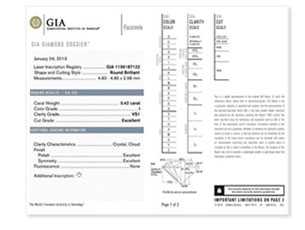
A diamond certificate confirms the specificity of each diamond, including its color range, carat weight, clarity range and cutting range. You must not purchase a diamond without a diamond certificate. Recording laboratories are well known by the Gemological Institute of America (GIA) and the American Gem Society (AGS) and the International Gemological Institute (IGI).
The cost of a diamond depends on the well-known symbols of the 4C's: Color, Clarity, Cutting and Carat. The relationship between these four factors determines the value of the diamond. Although it is often thought that carat is the most important component in 4C, color, cut and clarity have a major impact on the appearance of diamonds.
Shop Certified DiamondsDepending on the setting you choose, you can wet your diamond rings and / or wedding rings for up to 30 minutes in a dishwasher and water solution. This is best suited for prong and big church settings. In parking arrangements and baskets, however, inserting rings can increase the chances of gemstones emerging. Keep this in mind when you decide to wet a piece of jewelry using a mild dish soap in warm water and soak your jewelry for a few minutes. Using a soft cloth or cotton swab, gently rub the metal (gold, platinum, silver and wash. Repeat the procedure if necessary, but always be cautious when it comes to wearing jewelry.
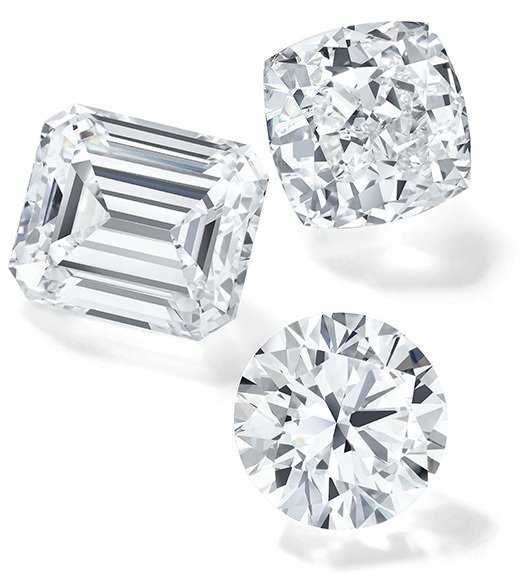
You can use a toothbrush to remove impurities between the prongs and the diamonds, but be careful not to scratch the metal or move the prong shape. If the strands from the cloth are trapped in the arrangement, gently use a handkerchief to remove. Also, watch the bell. Although diamonds can only scratch other diamonds, the precious metals on which they are based can easily be scratched.
When storing your diamond jewelry, be sure to keep it separate from other jewelry. Remember that a diamond can not only scratch any other jewelry you have, but it can also scratch you. Make sure that two pieces of diamonds are not kept in such a way that they touch each other.
Shop DiamondsAnother benefit of buying your engagement ring from an online jeweler is the extended access you get to ring styles. Here we provide almost all the ring styles you can think of - and if we don't have the style you want, we can design the ring for you. To choose the perfect ring, think carefully about her health and personality. In addition to your budget, his or her personal style and daily activities are important factors that should guide your choice of setting. Here are some suggestions that match personalities and different styles of engagement rings:
We offer many settings, but we will help you narrow down the options by looking at your style preferences, lifestyle, and personality.
Your engagement ring should fit snugly - not too tight, but also not too loose. A good ring is free enough to slip over your knot and strong enough that it can't fall off with your finger. To find the size of your ring, you can use our ring size sizer or search for a free metal ring size. Continue reading for tips on how to best measure your fingerprint and make sure you buy the right ring.
Diamonds come in many different shapes. Each diamond shape possesses its own unique qualities, so exploring and learning about the various shapes is worth your while.
Diamonds come in many different shapes. Each diamond shape possesses its own unique qualities, so exploring and learning about the various shapes is worth your while.
Diamonds come in many different shapes. Each diamond shape possesses its own unique qualities, so exploring and learning about the various shapes is worth your while.
There are many different styles of wedding rings to choose from, including gold or platinum rings, diamond rings, sapphire rings, and permanent bracelets.
For both brides and Grooms, a personalized recording - usually within the band - is a fun and loving way to add a special touch to wedding rings. You can choose to record with your monogram, wedding date, special quote, or fingerprints. The length of the recording depends on the size of the ring and the type of ring.
Every bride has an idea of what ring she wants and, if possible, the ring she will be wearing with it. If your partner is hesitant to wear a ring, then set aside your matching belt plans. While having similar bracelets may be a good public expression of your affection that should not be the case. Most men find the rings uncomfortable, so if your platinum wedding ring is set for a diamond wedding ring that doesn’t fit her the same, don’t worry - wear the ring you want and let her choose the ring she likes.
A perfect necklace or pendant will add style to whatever she wears. In addition to being a stylish gift, giving her a necklace gives you the opportunity to do an old-fashioned act of love to put it around her neck for the first time. Often a necklace is defined as a type of chain or length of precious metal or jewelry. They are also available in dangling styles that include a single diamond, a gemstone, a beautiful metal design, or a pearl, often set in a chain. A string of pearls is a measure of the closest pearl.

Chains go with everything. A beautiful platinum chain with a choker length will just add a touch of luster.
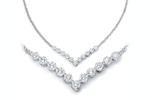
Necklaces come in a variety of styles including heavy chains, links, and braids. Some necklaces feature a fixed set of diamonds or gemstones, while others have gemstones that use the entire length.

Pearl necklaces are an essential element of a woman's jewelry. She can wear one with a dress to create a beautiful look.
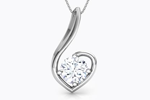
The simple design of the solitaire pendant allows all dedication to focus on the amazing diamond, pearl, or gemstone. These timeless pieces can be worn with a dress or denim.
A bracelet is one jewelry item she will see all the time, so she can appreciate it often. She also enjoys the feeling of it on her wrist reminding her of you.
Some bracelets are available in different lengths. So before you purchase, be sure to measure one of her other bracelets to be sure she doesn't need a special length.
Rings are usually worn at times when they do not work with their hands. Even if you don’t work, the approach of the bracelet on the hands causes it to crash and crash, so it has to be very strong. Jewelry designers are considering this, so you can be sure that the bracelet you choose will last a long time.
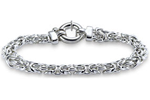
This is a role model. You will find a variety of chain structures, such as a standard round-interface or a series of wheat, in assortment of metals such as silver sterling, 18k gold and platinum.
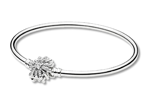
The bangle bracelet can be worn with a basic look or can be combined with a few different bangles. Bangles catch the eye with a metallic glow, and a few bangles interlocking together make a beautiful sound.
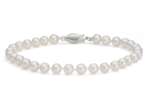
- A pearl bracelet is a traditional piece of jewelry. It adds a touch of wear to anything she wears, from pants to a party dress. Or on the other hand they can make it look legitimate by combining pearl accessories and studs.
Earrings make a great blessing because they always fit right in. A piece of precious stone is very important, it may come out of the ring, but you usually wear earrings.
Many styles of earrings go with anything, adding style to whatever she wears. The wide variety of earrings, sizes, and affordable prices make it easy to find the right couple for the blessing. She will always remember you wearing them.
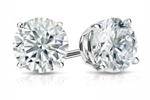
As they are small, stud hoops are not difficult to wear. They go as well with a party dress as they do with pants. You will find a combination of styles on Pearl Earrings, Diamond Earrings and Gemstone Earrings.
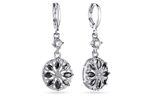
Drop earrings are made to hang under their setting. Swipe on the go, may include a nice touch. Pearl, gemstones, and discarded studs are available in a variety of ways.

- Platinum, gold, or silver hoops give a female touch, and valuable metals go with anything. For included shimmer, pick a couple with diamonds.
"Khan Diamonds Product" was added to wishlist